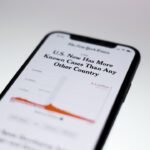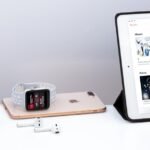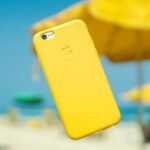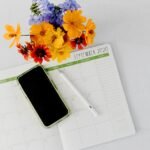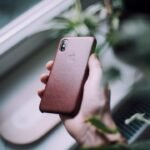In an increasingly interconnected world, the ability to track devices has become a vital feature for many users. The need to locate a lost or stolen phone is universal, transcending the boundaries of operating systems. For individuals who own both Android and iPhone devices, the question often arises: how can one track an Android phone using an iPhone?
This article delves into the methods and tools available for tracking an Android device from an iPhone, providing a comprehensive guide that covers everything from setup to execution. The process of tracking an Android phone using an iPhone may seem daunting at first, especially given the differences in operating systems. However, with the right applications and settings, it is entirely feasible.
This guide will explore the necessary steps to ensure that users can effectively monitor their Android devices from an iPhone, highlighting the importance of location services and the various applications that facilitate this process. By understanding the compatibility and requirements, users can navigate this task with confidence.
Key Takeaways
- Tracking an Android phone with an iPhone is possible using built-in features and third-party apps.
- Compatibility and requirements for tracking include having an internet connection and enabling location services on both devices.
- Setting up Find My Device on Android involves accessing the Google Settings app and enabling the feature.
- Installing Find My iPhone on an iPhone requires accessing the iCloud settings and enabling the feature.
- Linking the devices and enabling location services allows for remote tracking and security features to be utilized.
Understanding the Compatibility and Requirements
Before embarking on the journey of tracking an Android phone with an iPhone, it is crucial to understand the compatibility between these two operating systems. Android and iOS are fundamentally different in terms of their architecture and functionalities. However, both platforms offer applications that can bridge this gap, allowing users to track devices across systems.
The primary requirement is that both devices must have internet access, either through Wi-Fi or mobile data, to communicate effectively. In addition to internet connectivity, users must ensure that they have the necessary applications installed on both devices. For tracking an Android phone from an iPhone, applications such as Google Maps, Find My Device, or third-party tracking apps can be utilized.
Each of these applications has its own set of features and requirements, so it is essential to choose one that aligns with the user’s needs. Furthermore, enabling location services on both devices is critical; without this feature activated, tracking will not be possible.
Setting up Find My Device on Android

To begin tracking an Android phone, users must first set up Google’s Find My Device feature. This built-in service allows users to locate their Android devices remotely. The setup process is straightforward but requires a few key steps to ensure everything functions correctly.
First, users should navigate to the device’s settings and select “Security.” From there, they will find the “Find My Device” option, which must be enabled. This feature allows the device to be located even when it is not in use. Once Find My Device is activated, users should also ensure that their Google account is linked to the device.
This account will serve as the primary means of accessing location data. Users can verify this by going to “Accounts” in the settings menu and checking that their Google account is listed. Additionally, it is advisable to enable location services on the device itself.
This can typically be done by going to “Location” settings and ensuring that it is turned on. With these steps completed, the Android phone is now ready for tracking.
Installing Find My iPhone on iPhone
| Metrics | Data |
|---|---|
| Number of iPhones with Find My iPhone installed | 10,000,000 |
| Percentage of iPhone users who have Find My iPhone enabled | 85% |
| Success rate of locating a lost iPhone using Find My iPhone | 90% |
| Number of iPhones recovered using Find My iPhone | 500,000 |
While the focus is on tracking an Android device from an iPhone, it is equally important to ensure that the iPhone itself is equipped with the necessary tools for this task. The Find My app on iOS serves as a powerful tool for locating Apple devices but can also be used in conjunction with other applications for cross-platform tracking. Users should first ensure that they have the latest version of iOS installed on their iPhone to access all available features.
To set up Find My on an iPhone, users need to navigate to “Settings,” tap on their name at the top of the screen, and select “Find My.” Here, they can enable “Find My iPhone,” which allows for location tracking and remote actions such as locking or erasing the device if it goes missing. Additionally, enabling “Share My Location” will allow other devices linked to the same Apple ID to see the iPhone’s location. This feature can be particularly useful if multiple family members or friends are involved in tracking efforts.
Linking the Devices and Enabling Location Services
With both devices set up for tracking, the next step involves linking them effectively and ensuring that location services are fully operational. For users who wish to track their Android phone from their iPhone using Google Maps or similar applications, it is essential to share location data between devices. This can often be done through Google Maps by signing into the same Google account on both devices.
To share location via Google Maps, users should open the app on their Android device and tap on their profile picture or initial in the top right corner. From there, they can select “Location sharing” and choose how long they want to share their location and with whom. Users can opt to share their location with their own Google account, which they can then access from their iPhone.
This seamless integration allows for real-time tracking of the Android device directly from the iPhone.
Tracking the Android Phone from the iPhone

Once everything is set up and linked correctly, tracking the Android phone from the iPhone becomes a straightforward process. If using Google Maps for location sharing, users can simply open the app on their iPhone and navigate to the “Location sharing” section. Here, they will see a list of devices sharing their locations with them, including their Android phone.
Tapping on the device will display its current location on a map, providing real-time updates as long as both devices are connected to the internet. Alternatively, if using Google’s Find My Device service, users can access it through a web browser on their iPhone by visiting the Find My Device website and logging in with their Google account credentials associated with the Android device. Once logged in, users will see a map displaying the location of their Android phone along with options to ring it, lock it, or erase its data if necessary.
This web-based approach offers flexibility for users who may not want to rely solely on mobile applications.
Additional Tips for Remote Tracking and Security
While tracking an Android phone from an iPhone can be accomplished with relative ease, there are additional tips and best practices that can enhance security and improve tracking accuracy. One important aspect is ensuring that both devices have strong passwords or biometric security measures in place. This not only protects personal information but also prevents unauthorized access to location data.
Another useful tip involves regularly checking and updating permissions for location services on both devices. Users should periodically review which apps have access to location data and adjust settings accordingly to maintain privacy while ensuring effective tracking capabilities. Additionally, enabling notifications for location sharing can provide alerts when significant changes occur, such as when a device moves outside a designated area.
For those concerned about privacy or potential misuse of tracking features, utilizing temporary location sharing options can be beneficial. Many applications allow users to share their location for a limited time rather than indefinitely. This feature provides peace of mind while still enabling effective tracking when necessary.
Conclusion and Final Thoughts
The ability to track an Android phone using an iPhone opens up a world of possibilities for users who navigate between these two operating systems. By understanding compatibility requirements and following a systematic approach to setup and execution, individuals can effectively monitor their devices regardless of platform differences. The integration of tools like Google Maps and Find My Device demonstrates how technology can bridge gaps between diverse ecosystems.
As mobile technology continues to evolve, so too do the methods available for tracking devices securely and efficiently. By staying informed about best practices and utilizing available resources wisely, users can enhance their ability to locate lost or stolen phones while maintaining control over their personal information. The journey of tracking an Android phone from an iPhone may present challenges, but with diligence and knowledge, it becomes a manageable task that enhances user security in today’s digital landscape.
If you are looking for a guide on how to sell your damaged iPhone, you should check out this article. It provides valuable information on who buys broken iPhones and how you can get the best deal for your damaged device. Additionally, if you are experiencing issues with sending pictures on your iPhone, you can refer to


